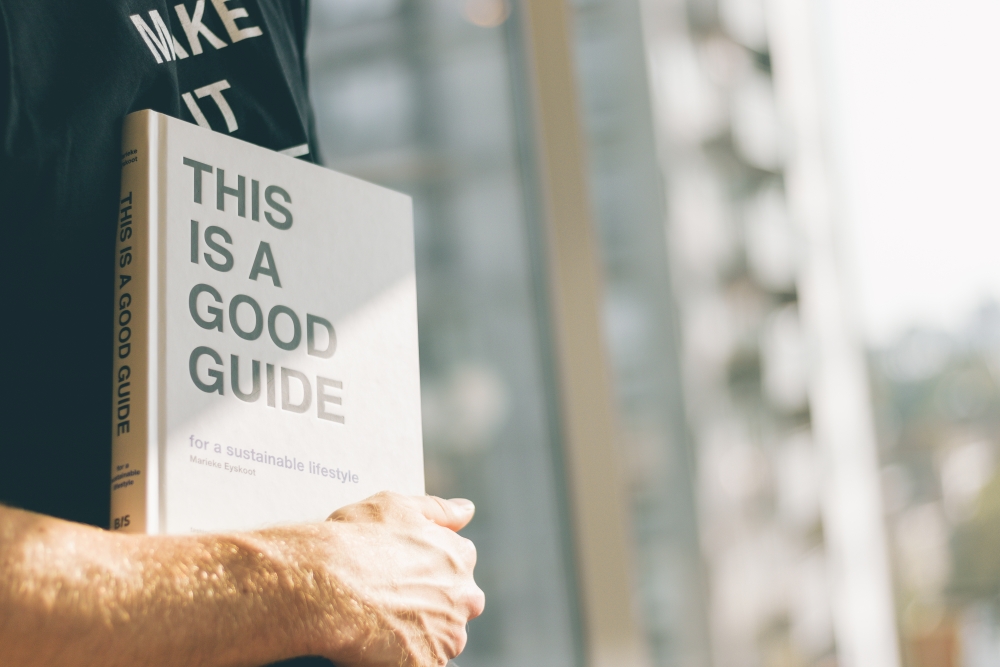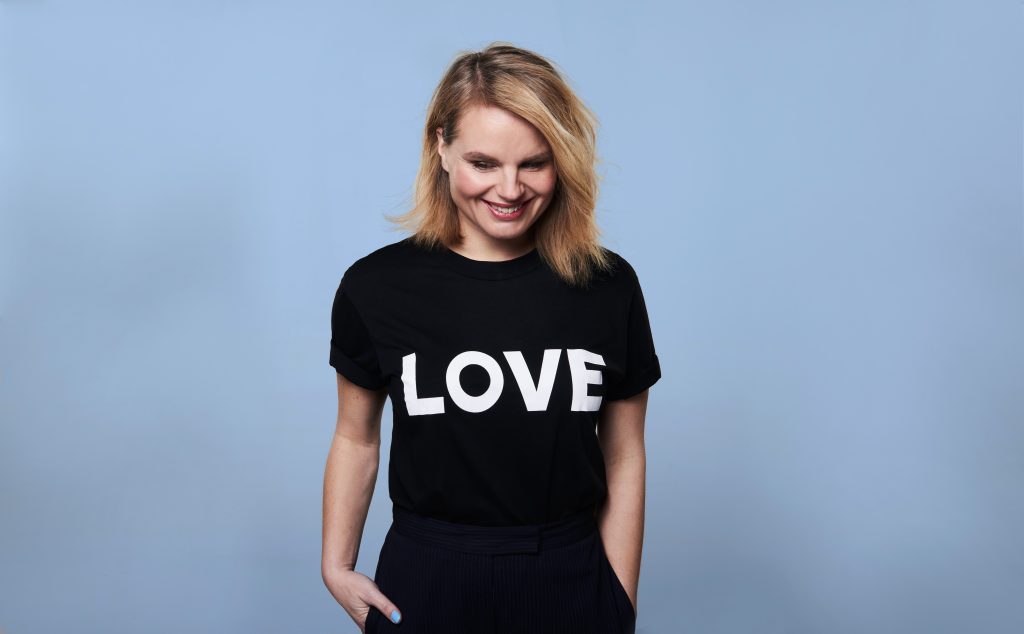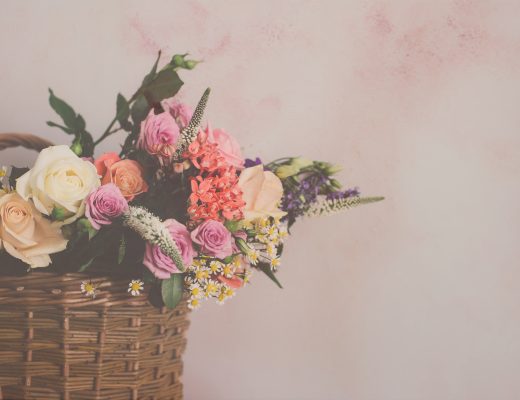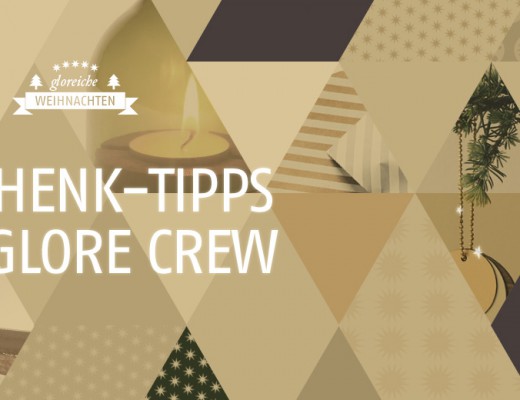Ist es Dir auch schon einmal schwer gefallen nachhaltig zu leben, weil Du erstmal mühsam nach ökologischen Alternativen suchen musstest? Ich glaube es ging uns allen schon einmal so – wir würden zwar gerne bewusster Leben, aber wissen gar nicht, wo wir am Besten anfangen sollen. Und das kann manchmal etwas frustrierend sein. Dass ein nachhaltiges Leben aber alles andere als frustrierend ist, zeigt die Autorin Marieke Eyskoot mit ihrem Buch „This is a Good Guide – for a sustainable lifestyle“.
Marieke ist eine enthusiastische Verfechterin von ethischer Mode und Lifestyle aus Amsterdam. In ihrem Buch, einem umfassenden Leitfaden für ein nachhaltigeres Leben, stellt sie unter anderem auch glore vor. Wir haben mit der Expertin über Nachhaltigkeit und ihr neues Buch gesprochen und eine Menge Inspiration für ein nachhaltigeres Leben bekommen.
(English version of the interview below)
Marieke, seit wann ist Nachhaltigkeit so ein wichtiges Thema für Dich?
Nachhaltigkeit und eine faire Welt waren mir schon immer wichtig. Zum Beispiel habe ich mit 12 aufgehört Fleisch zu essen, weil ich Bilder vom Viehtransport gesehen habe und mir einfach nicht vorstellen konnte, dass wir Tiere so behandeln. Von klein auf hatte ich das Gefühl, dass ich durch Zufall in diesem Teil der Welt geboren wurde und dass ich durch Demokratie, Frauenrechte, Menschenrechte, ein positives Klima und eine gute Wirtschaft bereits so viel bekommen habe. Und ich habe nichts getan, um das alles zu verdienen. Es wurde mir einfach gegeben, nur weil ich zufällig hier geboren wurde. Also hatte ich auch nie das Gefühl, dass ich es mehr als andere verdient habe. Das war immer die Grundlage für das, was ich tue. Deshalb möchte ich alles, was mir gegeben wurde nutzen, um die Welt etwas fairer zu gestalten und mehr Gleichgewicht und Gleichheit zu schaffen.
Warum hast Du Deine Leidenschaft für Nachhaltigkeit in einem Buch umgesetzt? Was war Dein Weg bis „This is a Good Guide – for a sustainable lifestyle“?
Ich habe 2002 angefangen, für die Kampagne für Saubere Kleidung zu arbeiten. Damals waren die Leute ziemlich verwirrt, weil diese Themen nicht so bekannt waren und niemand wirklich wussten, was die Kampagne für Saubere Kleidung war. Das hat sich in den letzten 15 Jahren natürlich enorm verändert. Ich arbeitete 9 Jahre lang dort und merkte dann, dass es so viele Leute gab, die viele Fragen hatten. Die Menschen begannen sich bewusster zu werden, was in der Modebranche geschah, wollten aber auch selbst etwas tun. Im Laufe der Jahre habe ich viel über Marken gelernt, die nachhaltig handeln. Also wollte ich diese beiden Dinge zusammenbringen – erstaunliche Marken aufzeigen und den Verbrauchern gleichzeitig Alternativen und Dinge bieten, die sie selbst tun können. Deshalb habe ich mich entschieden, ein umfassendes Buch zu schreiben, um die verschiedenen Informationen zusammenzutragen. Wenn man etwas über Essen oder Kleidung wissen will, muss man erst an vielen verschiedenen Orten suchen, deshalb wollte ich alle Möglichkeiten für einen nachhaltigeren Lebensstil zusammenbringen. Das endete dann in „This is a Good Guide – for a sustainable lifestyle“.
Und es scheint auch ein sehr guter Guide zu sein, weil Du sehr viel positives Feedback erhalten hast. Kannst Du uns erzählen, worum es in Deinem Buch genau geht?
Das Buch besteht aus sechs Kapiteln – 1) Mode und Accessoires, 2) Beauty, 3) Essen, 4) Wohnen und Arbeiten, 5) Freizeit und Reisen und 6) Hintergrundinformationen. Jedes Kapitel hat viele Tipps und Tricks: Dinge, die du tun kannst, Entscheidungen, die du treffen kannst, Dinge, die du vielleicht aufhören kannst zu tun. Außerdem enthält es Interviews mit Leuten, die Pioniere in einem bestimmten Bereich sind und andere Ansichten und Inspirationen geben können. Das Buch enthält außerdem viele Fakten und Zahlen darüber, was in der Welt passiert, und es gibt einen Leitfaden mit nachhaltigen Geschäften und Marken aus der ganzen Welt.
Warum ist das Buch Deiner Meinung nach den Kauf wert?
Mit dem Buch kannst Du einen Anfang machen. Es beinhaltet offensichtlich nicht alle Geschäfte oder Marken auf der ganzen Welt, denn das würde den Guide sehr unbrauchbar und nicht sehr nachhaltig machen. Aber es enthält hoffentlich alles was man braucht, um das eigene Leben nachhaltiger zu gestalten. Und das ist nicht nur gut für die Welt, sondern auch gut für einen Selbst. Deshalb heißt das Buch auch „This is a Good Guide“ und nicht „This is a Guide for the most perfect people in the world“. Es ist ein Leitfaden, der hilft, besser und nicht perfekt zu werden. Denn das ist wirklich noch nicht machbar. Die Menschen sollen sich nicht entmutigt fühlen, weil sie denken, dass sie nichts tun können. Viele haben das Gefühl, dass sie durch ein nachhaltiges Leben eingeschränkt werden. Das Buch soll zeigen, dass ein nachhaltigeres Leben einem ganz im Gegenteil mehr bieten kann – viel mehr Möglichkeiten, verschiedene Geschäfte und Marken, von denen man davor nichts wusste. Es kann Dein Leben besser machen und ist sowohl gut für dich als auch für die Welt um dich herum. Und das ist ein wichtiger Zusammenhang – denn wir dürfen das Leben schließlich auch genießen.
»It is a guide to help you become better and not perfect.«
Für das Buch hast Du bestimmt eine Menge Recherche durchgeführt, um alle Informationen zu finden. War es schwierig, an die Informationen zu kommen und wie hast Du von den Marken erfahren, die in dem Buch vorgestellt werden?
Es ist eine Kombination aus vielen Dingen, denn ich arbeite seit 17 Jahren im Bereich nachhaltiger Mode und Lifestyle. Das Buch enthält also alle Informationen, Marken und Geschäfte, die ich über die Jahre kennengelernt habe. Man könnte also sagen, dass ich auf den Seiten irgendwie meinen Kopf entleert habe. Aber natürlich habe ich auch sehr spezifische Recherchen durchgeführt. Ich habe viele Leute für das Buch interviewt. Ich wollte, dass das Buch zu einer sehr reichhaltigen Informationsquelle wird, die die Standpunkte vieler verschiedener Experten und nicht nur meine eigenen Standpunkte enthält. So hatte ich das große Glück, viele interessante Einblicke und Anregungen von Pionieren aus aller Welt zu erhalten.
Dein Guide erschien zuerst in der niederländischen Orginalversion, in welcher glore auch bereits gefeatured wurde. Wann hast Du gemerkt, dass es einen Bedarf für Deinen Guide in einer englischen Version gibt?
Im Jahr 2012 habe ich bereits ein Buch geschrieben, das sich nur mit Mode beschäftigt. Damals bekam ich bereits ein paar Anfragen für eine internationale Ausgabe. Aber mein Verleger war daran nicht interessiert, also konnte ich das nicht umsetzen. Als ich anfing dieses Buch zu schreiben, stellte ich deshalb sicher, dass ich bei Bedarf auch eine international Version herrausbringen konnte. In der niederländischen Ausgabe habe ich bereits einige internationale Geschäfte und Marken vorgestellt, unter anderem auch glore. Ein nachhaltigerer Lebensstil ist nämlich nicht nur ein nationales, sondern vielmehr ein globales Thema. Von Anfang an hatte ich viele Anfragen für solch ein Buch in englischer Sprache mit internationalen Geschäften, Marken und Informationen. Deshalb begann ich relativ schnell, vielleicht innerhalb eines halben Jahres, damit, die niederländische Version komplett in eine internationale Version zu überführen. Während die niederländische Version eher auf die Niederlande und Belgien ausgerichtet ist, habe ich jetzt eine Version mit Statistiken, Geschäften und Marken aus der ganzen Welt erstellt. Es ist also nicht nur eine Übersetzung – ich habe wahrscheinlich jede Seite des Originalbuchs geändert, um es für ein internationales Publikum interessant zu machen.
An der Nachfrage zu Deinem Buch sieht man deutlich, dass dem Thema Nachhaltigkeit viel mehr Aufmerksamkeit geschenkt wird – sowohl auf Seite der Konsumenten als auch auf Seite der Hersteller. Glaubst Du, dass es in einigen Jahren eine neue Version des Buches geben wird?
Das hoffe ich. Eigentlich kann ich das Buch immer erneuern, wenn eine Auflage ausverkauft ist. Jedes Mal wenn neue Bücher gedruckt werden müssen, habe ich die Möglichkeit, das Buch sehr schnell durchzugehen und eine aktualisierte Version davon zu erstellen. Andererseits hoffe ich natürlich, dass mein Buch und meine Arbeit in etwa 10 Jahren nicht mehr gebraucht werden. Weil es dann nur noch diese Art von Entscheidungen geben wird und es die logische, natürliche Art sein wird, Dinge zu tun. Dann wird man hoffentlich niemanden mehr brauchen, der einem Vorschläge, Entscheidungen oder Informationen gibt, weil es allgemein bekannt ist. Es wäre toll ohne Arbeit zu sein und etwas anderes zu tun, es gibt genug zu tun. Das wäre mein Endziel im Leben: überflüssig zu werden.
»It would be amazing to be out of the job and doing something else, there is enough to be done. That would be my end goal in life: to become redundant.«
Was wäre Deine Antwort auf die Frage, wie man am Besten anfängt ein nachhaltigeres Leben zu führen?
Ich denke, das ist eine wirklich gute Frage. Ich versuche immer darauf hinzuweisen mit den Dingen zu beginnen, die Menschen jeden Tag tun. Selbst wenn das eine kleine Sache ist, wenn Du es jeden Tag tust, dann ist es eine massive Veränderung in Deinem Lebensstil. Außerdem gebe ich den Leuten den Rat, mit Dingen zu beginnen, die sie für wirklich wichtig halten oder die sie wirklich genießen. Wenn Du dich zum Beispiel sehr für Essen oder Mode interessierst, dann kannst Du schauen, was Du in diesem Bereich verändern kannst und dann von dort aus weitermachen. Beginne mit kleinen Dingen – versuche nicht, alles auf einmal zu lösen. Entscheidungen, die sich klein anfühlen, können bereits einen großen Einfluss haben.
 Was ist Deiner Meinung nach ein guter Rat für Menschen, die ein nachhaltigeres, aber gleichzeitig stilvolles Leben führen wollen?
Was ist Deiner Meinung nach ein guter Rat für Menschen, die ein nachhaltigeres, aber gleichzeitig stilvolles Leben führen wollen?
Ich glaube nicht, dass es einen Unterschied zwischen diesen beiden Dingen gibt. Ein Ziel meines Buches ist es, zu zeigen, dass stilvoll und nachhaltig wirklich gut zusammenpassen. Viele der nachhaltigen Modemarken sind die innovativsten und diejenigen, die interessantere Stoffe und interessantere Formen finden, um die Mode zeitloser zu machen. Um ein sehr stilvolles und nachhaltiges Leben in Sachen Mode zu führen, ist es wirklich wichtig sich der eigenen Entscheidungen sehr bewusst zu sein. Gleiches gilt für den eigenen Stil. Außerdem ist es wichtig viel mehr auf die Langfristigkeit von Dingen zu achten. Wir wurden mehr oder weniger einer Gehirnwäsche unterzogen, um so kurzfristige Denker zu sein und wir sind eigentlich viel klüger. Aber wir nutzen unsere Intelligenz nicht mehr so oft, wenn es um diese Dinge geht. Das liegt daran, dass wir von Sales, Werbung und Trends zum Kaufen verleitet werden. Jeden Tag wird uns gesagt, dass wir nicht gut genug sind und dass wir nicht dazugehören, weil wir nicht die richtige Kleidung tragen oder unsere Haut nicht strahlend genug ist. Das ist der Versuch uns eine Identität aufzuzwingen, die auch negativ definiert ist. Denn wir dürfen weiterhin nicht mit uns selbst zufrieden sein. Wir dürfen uns nicht mögen oder lieben, weil wir dann nichts mehr kaufen müssen, um uns selbst zu vervollständigen. Ich denke, das ist wirklich ein großer Teil des Grundes, warum wir es schwierig finden, unser Verhalten zu ändern. Der Druck „gut“ auszusehen – was auch immer dieses „gut“ sein mag – steht dem Guten tun sehr im Weg. Es ist sehr schwierig wirklich nachhaltig zu werden, wenn man die ganze Zeit kaufen muss, um dazuzugehören. Deshalb denke ich, dass es wirklich entscheidend ist, all dies zu erkennen und dem zu widerstehen, um uns selbst und auch den Planeten zu schützen.
Letzte Woche war die Fashion Revolution Week, wo die Menschen Bewusstsein und mehr Transparenz gegenüber der Modebranche, insbesondere der Fast Fashion Branche, schaffen wollen. Was bedeutet diese Woche für Dich persönlich?
Natürlich poste ich während der Fashion Revolution Week auch auf Social Media über diese Themen. Ich versuche immer offen und ehrlich auf Social Media zu sein, um nicht den Eindruck zu erwecken, dass ich ein perfekter Mensch bin. Und dass Du ein perfekter Mensch sein müsstest, um zu einem nachhaltigeren Lebensstil beitragen zu können. Ich denke, es ist eine großartige Initiative, die mehr Offenheit und mehr Transparenz fordert, was meiner Meinung nach eines der wichtigsten Dinge in einem nachhaltigen Lebensstil ist. Viele Marken können ziemlich stolz auf ihre Leistungen und neuen Fortschritte sein, aber für mich ist das nur dann wirklich glaubwürdig, wenn sie auch offen darlegen, was sie noch nicht tun und welche Schritte sie versuchen zu verbessern. Ich denke also, dass Transparenz ein großes Thema und eine der Schlüsselprobleme der Nachhaltigkeit ist. Denn wenn die Modebranche und andere Branchen transparent wären, dann würden wir wirklich wissen, wofür wir uns entscheiden und wofür wir unser Geld ausgeben. Das wäre einer der größten Schritte in Richtung einer gerechteren Welt.
Wir bedanken uns ganz herzlich bei Marieke für dieses inspirierende Interview!
Das Buch erhältst Du gebunden oder als eBook beim Buchhändler Deines Vertrauens zum Preis von ca. 20 Euro.
Mehr über Marieke und ihr Buch erfährst Du auf ihrer Website.
Geschrieben von Franziska Sturm
ENGLISH VERSION:
Marieke, since when is sustainability such an important topic for you?
Sustainability and a fair world have always been important to me. For instance, I stopped eating meat when I was 12 because I saw pictures of the cattle transport and I just really couldn‘t imagine that we were treating animals in such a way. From quite a young age I sort of had the feeling that I was born in this part of the world by coincidence. I‘ve gotten so much through democracy, women rights, human rights, a positive climate, and a good economy and I didn‘t do anything to earn all that. It was just handed to me just because I happened to end up here. I also didn‘t feel like I earned it more than anyone else. That has always been the basis of what I do. I want to take everything that I had been given to try and use it to make the world slightly fairer and create more balance and equality.
Why did you turn your passion for sustainability into a book? What was your journey until „This is a Good Guide – for a sustainable lifestyle“?
I started working for the Clean Clothes Campaign in 2002. Back then, people were sometimes confused because these issues were not so well-known and people didn‘t really know what the Clean Clothes Campaign was. This, of course, has changed immensely over the last 15 years. I worked there for 9 years and then realized that there were so many people who had lots of questions. People started to become more aware of what was happening in the fashion industry but really wanted to do something themselves as well. Over the years I learned so much about brands that were doing it differently, which really had a much more ethical way of doing things. So I wanted to put those two together – put really amazing brands on the map and give consumers alternatives and things they could actually do themselves to be part of the improvement. That‘s why I decided to make a comprehensive book to pull lots of information together. If you want to know something about food or clothes you need to look at many different places so I wanted to bring all the possibilities for a more sustainable lifestyle together. That ended up in „This is a Good Guide – for a sustainable lifestyle“.
And it really seems to be a good guide because you received a lot of positive feedback. What is the book about exactly?
The book has six chapters – 1) fashion and accessories, 2) beauty, 3) food, 4) home and work, 5) leisure and travel and 6) background information. Every chapter has lots of tips and tricks: things you can do, choices you can make, things you can maybe stop doing. It also contains interviews with people who are pioneers in a certain field so they can give you other views and inspirations. You also get some facts and figures about what is happening in the world and there is also a guide section with sustainable stores and brands from all over the world.
Why do you think is the book worth buying?
With the book, you can make a start. It obviously doesn‘t feature every store or brand from all over the world because that would make the book very unusable and not very sustainable. But it hopefully has all of what you need to start taking steps to change into a more sustainable lifestyle that is not just good for the world but also good for you. That is also why the book is called „This is a Good Guide“ and not „This is a Guide for the most perfect people in the world.“ It is a guide to help you become better and not perfect. Because that is really not feasible yet. I really don‘t want people to feel discouraged because they think they can‘t do everything. Many people feel that they are not allowed to do a lot of things anymore. But the book should demonstrate that living a more sustainable life can actually give you more – much more choices, more different stores and brands you didn‘t know about yet. It can really make your life a lot better – a more sustainable life is good for you and good for the world around you. That is an important combination to make because we are also allowed to enjoy life.
You must have done a lot of research for the book for finding all the information. Was it hard to get all of the information together and how did you find out about the brands you featured in the book?
It is a combination of lots of things because I‘ve been working in sustainable fashion and lifestyle for 17 years now. So it contains all information, brands, and stores I learned about in those years. You could say that it was sort of emptying my head on those pages. But of course, I also did very specific research. I interviewed lots of people for the book as well. I wanted the book to become a very rich source of information that has the viewpoints of lots of different experts in it and not only my point of view. So I was very lucky in receiving lots of interesting insights and suggestions from pioneers from all over the world.
Your guide was first published in the original Dutch version, in which glore was already featured. When did you notice that there was a need for not only a guide in Dutch but also in English?
In 2012, I‘ve already written a book which was only about fashion. Back then I already got a few requests for such a book in an international edition. But my publisher wasn‘t so interested in doing that so I couldn‘t do it. When I started writing this book, I made sure that I could also do it internationally just in case I would get the same question again. In the Dutch edition I already featured a few international stores and brands – including glore – because a more sustainable lifestyle isn‘t just a national issue, it is a global issue. From the beginning, I got a lot of requests for such a book in English featuring international stores, brands, and information. Quite quickly, maybe within half a year, I started working on completely revising the Dutch version into an international one. Whilst the Dutch version is rather focused on the Netherlands and Belgium, I now made a version with figures, stores, and brands from all over the world. So it is not just a translation. I changed probably every page of the original book to make it interesting for an international audience.
Currently, the topic of sustainability is getting a lot more attention and there is constantly a growing number of brands that sell sustainable products. Do you think that in some years ahead there will be a new version of the book?
I hope so. Well, actually I get to renew the book every time the book is sold out. Each time new books need to be printed I get the opportunity to very quickly go through the book and create an updated version of it. On the other hand, I hope that in 10 years or so my book and my work are not needed anymore. Because there will be only these kinds of choices left and it will be the logical, natural way of doing things. You will not need someone to give you suggestions, choices or information because it will be common knowledge. It would be amazing to be out of the job and doing something else, there is enough to be done. That would be my end goal in life: to become redundant.
What would be your answer for people who ask what would be a good way to start going into sustainability?
I think that is a really good question. I always try to point out to start with things people do every day. Even if that is a small thing, if you do it every day then it is a massive change in your lifestyle. Also, I give people the advice to start with things that they find really important or that they really enjoy. If you are really interested in food for instance or in fashion then you can start seeing what you can do there and then from there on taking it further. Start with small things – don‘t try to solve everything all at once. Decisions that feel small can already have a big impact.
What do you think is good advice for people that want to live a more sustainable but at the same time stylish lifestyle, especially regarding clothes?
I don‘t think there is a difference between those things. A goal of my book is to show that stylish and sustainable really go well together. Many of the sustainable fashion brands are the most innovative ones and the ones who find more interesting fabrics and more interesting shapes to make fashion more timeless. I think for leading a very stylish and sustainable life in terms of fashion it‘s really important to be very aware of the choices you make and also of your style and what you feel comfortable in. It is important to really look much more in the long-term than in the short-term. We‘ve been brainwashed to be such short-term thinkers and we are much smarter than that. But we don‘t use our smartness so often anymore when it comes to those things. Because we are very tempted by sale, advertisement, and all the trends. Every day we‘re being told that we are not good enough and that we don‘t belong because we don‘t wear the right clothes or our skin is not glowing enough. This is really trying to keep us in an identity that is quite negatively defined. We need to continue not to be happy with ourselves. We are not allowed to like or love ourselves because then we don‘t have to buy anything anymore to fix ourselves. I think this is really a big part of the reason we find it difficult to change our behavior because the pressure to look „good“ – whatever that „good“ may be – is very much in the way of doing good. It is very difficult to become really sustainable if you need to keep buying all the time to belong. So I think it is really crucial to recognize and resist all of this in order to just save ourselves and also save the planet.
Last week, it was the Fashion Revolution Week where people want to raise awareness and more transparency towards the fashion industry, especially the fast fashion industry. What does this week mean to you personally?
Of course, I also post on social media about those issues during the fashion revolution week. I always try to be open and honest on social media to not give the suggestion that I‘m a perfect person. And that you would have to be a perfect person to be able to contribute to a more sustainable lifestyle. It is a great initiative that asks for more openness and more transparency which I think is one of the most important things in a sustainable lifestyle. Lots of brands can be pretty proud of their achievements and new steps that they have been taking in this area but then for me, that is only really credible if they are also open about what they don‘t do yet and which steps they are trying to take to improve. So I think transparency is a huge issue and one of the key issues in sustainability because if the fashion industry and other industries would become transparent then we would really know what we are choosing and what we are spending our money on. That would be one of the biggest steps towards a more fair world.
We thank Marieke very much for this inspiring interview!
You can get the book bound or as an eBook at your trusted bookseller for about 20 Euro.
You can find out more about Marieke and her book on her website.









Keine Kommentare